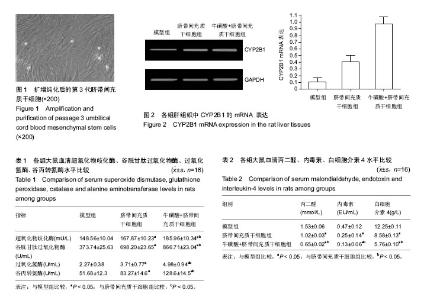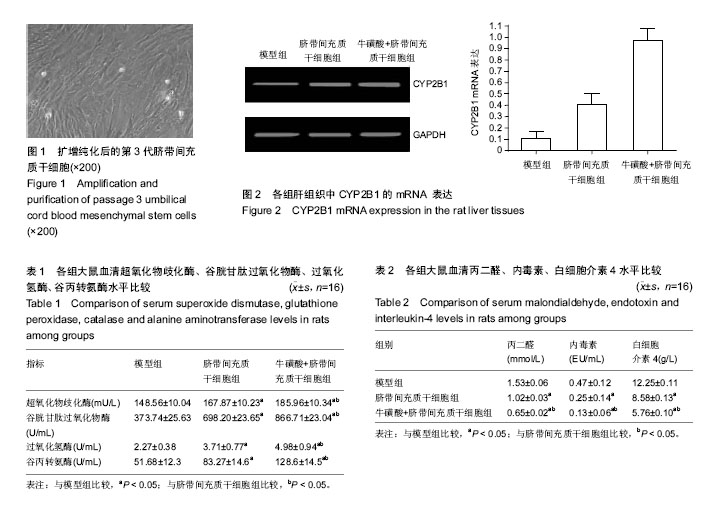| [1] Weiss ML, Medicetty S, Bledsoe AR, et al. Human umbilical cord matrix stem cells: preliminary characterization and effect of transplantation in a rodent model of Parkinson's disease. Stem Cells. 2006;24(3):781-792.[2] Can A, Karahuseyinoglu S. Concise review: human umbilical cord stroma with regard to the source of fetus-derived stem cells. Stem Cells. 2007;25(11):2886-2895.[3] Rachakatla RS, Marini F, Weiss ML, et al. Development of human umbilical cord matrix stem cell-based gene therapy for experimental lung tumors.Cancer Gene Ther. 2007;14(10): 828-835.[4] Rachakatla RS, Pyle MM, Ayuzawa R, et al. Combination treatment of human umbilical cord matrix stem cell-based interferon-beta gene therapy and 5-fluorouracil significantly reduces growth of metastatic human breast cancer in SCID mouse lungs. Cancer Invest. 2008;26(7):662-670.[5] 马桂霞,何红燕,罗敏杰,等. 人脐带间充质干细胞分化为胰岛β细胞的实验研究[J].实用儿科临床杂志,2008,23(8):618-620.[6] 杨晓蕾,陈智聪,廖继东,等.尼克酰胺对人脐带间充质干细胞的保护效应[J].中国病理生理杂志,2015,31(10):1756-1761.[7] 孙国栋,李志忠,王晶,等.人脐带间充质干细胞的分离培养及向成骨成脂分化的实验研究[J].西安交通大学学报:医学版,2010, 31(2):143-147。[8] 刘若囡,徐立,时乐,等.常用皂苷类中药致肝损伤的毒理学研究进展[J].中南药学,2010,8 (12):916-919.[9] 何绍清,罗振宇,刘秋英,等. 人脐带间充质干细胞分离培养及向脂肪与成骨细胞的分化[J].中国组织工程研究与临床康复,2010, 14(14):2492-2496.[10] 毛德义,邱华,刘洁.中草药对肝损伤中肝细胞线粒体的保护机制[J].中国药房,2005,16(22) :1745-1747.[11] Campard D, Lysy PA, Najimi M, et al. Native umbilical cord matrix stem cells express hepatic markers and differentiate into hepatocyte-like cells. Gastroenterology. 2008;134(3): 833-848.[12] 王加志,刘树民,汤青,等. 黄药子毒性组分对肝细胞内Ca2+浓度的影响[J].中医药信息,2012,29(6):15-16.[13] 任红英,赵钦军,刘拥军,等. 脐带间充质干细胞体外诱导分化为肝细胞样细胞的研究[J].山东医药,2008,48(30):24-26.[14] 唐宋琪,杨雪,丁若兰,等. 雷公藤多苷致大鼠肝损伤的“时-毒”关系及免疫毒性机制研究[J].中药药理与临床,2012,28(5): 78-82.[15] Schmidt D, Mol A, Odermatt B, et al. Engineering of biologically active living heart valve leaflets using human umbilical cord-derived progenitor cells. Tissue Eng. 2006; 12(11):3223-3232.[16] Pari L, Prasath A. Efficacy of caffeic acid in preventing nickel induced oxidative damage in liver of rats. Chem Biol Interact. 2008;173(2):77-83.[17] Chao KC, Chao KF, Fu YS, et al. Islet-like clusters derived from mesenchymal stem cells in Wharton's Jelly of the human umbilical cord for transplantation to control type 1 diabetes. PLoS One. 2008;3(1):e1451.[18] 禄保平,苗明三,杨晓娜,等. 应用雷公藤多苷灌胃建立小鼠急性肝损伤模型的研究[J].中药药理与临床,2007,23(2):75.[19] 吕丽莉,黄伟,于晓,等.不同柴胡组分对大鼠肝毒性与氧化损伤机制影响的研究[J].中国中药杂志,2009,34(18):2364-2368.[20] 薛翔,戚新明,任进,等.肝脏细胞色素P450酶对雷公藤甲素所致毒性的影响[C].贵阳:中国毒理学会第五次全国学术大会论义集, 2009:108.[21] 姚金成,刘颖,胡领,等. 雷公藤甲素对人肝细胞L-02肝药酶活性的影响[J].中国医院药学杂志,2012, 32(20): 1597 -1600[22] 丁虹,吴建元,童静,等.雷公藤公藤甲素急性毒性及其机制研究[J].中药材,2004,27(2):117.[23] 闫俊卿,韩涛,朱争艳.人脐带间充质干细胞生物学特性及向类肝细胞的分化[J].世界华人消化杂志.2008,16(15):1639-1644.[24] 周璐,姚广涛,曹智丽,等.吴茱萸水煎液致小鼠肝毒性机制研究[J].中国实验方剂学杂志,2013, 19(22) :269-272.[25] Seshareddy K, Troyer D, Weiss ML. Method to isolate mesenchymal-like cells from Wharton's Jelly of umbilical cord. Methods Cell Biol. 2008;86:101-119.[26] 徐英,陈崇崇,杨莉,等. 基于胆汁酸代谢网络分析中药黄药子的肝毒性[J].药学学报,2011,46(1):39-44.[27] Kuo TK, Hung SP, Chuang CH, et al. Stem cell therapy for liver disease: parameters governing the success of using bone marrow mesenchymal stem cells. Gastroenterology. 2008;134(7):2111-2121.[28] Takami T, Terai S, Sakaida I. Novel findings for the development of drug therapy for various liver diseases: Current state and future prospects for our liver regeneration therapy using autologous bone marrow cells for decompensated liver cirrhosis patients. J Pharmacol Sci. 2011;115(3):274-278.[29] 刘迎娣,杨云生,王韫芳,等.经脾脏hMSCs移植对乙酰氨基酚所致小鼠急性肝损伤的治疗作用[J].世界华人消化杂志,2008, 16(18):1969-1973.[30] Terai S, Sakaida I, Nishina H, et al. Lesson from the GFP/CCl4 model--translational research project: the development of cell therapy using autologous bone marrow cells in patients with liver cirrhosis.J Hepatobiliary Pancreat Surg. 2005; 12(3):203-207.[31] Iwamoto T, Terai S, Hisanaga T, et al. Bone-marrow-derived cells cultured in serum-free medium reduce liver fibrosis and improve liver function in carbon-tetrachloride-treated cirrhotic mice.Cell Tissue Res. 2013 351(3):487-495. |

